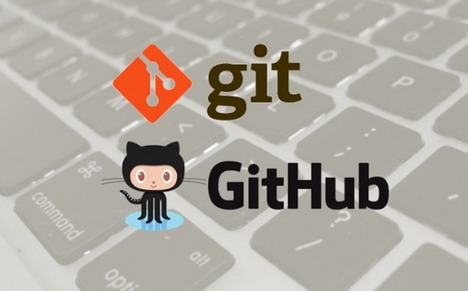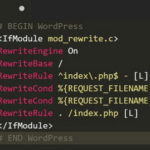20 Useful Git & GitHub Features, Tips & Tricks
While there are many begin guides for Git and clients of GitHub see an “ace tip” each time they revive GitHub.com, it’s as yet difficult to discover a gathering of valuable tips for designers who need to work more intelligent with Git and GitHub. How about we settle that. For those of you who are new to Git or GitHub, the following couple of sections will give you enough foundation to comprehend the tips.
Git is an appropriated variant control framework, initially composed by Linus Torvalds in 2005 for and with assistance from the Linux portion network. I’m not here to move you on Git, so I’ll save you the spiel about how quick and little and adaptable and well known it is, however you should realize that when you clone a Git store (“repo,” for short), you get the whole form history all alone PC, not only a depiction from one branch at one time.
Git began as an order line apparatus, befitting its cause in the Linux piece network. You can at present utilize the Git order line, on the off chance that you like, however you don’t need to. Specifically, in the event that you use GitHub as your host, you can utilize the free GitHub customer on Windows or Mac. Then again, the Git order line will work for any host, and it comes pre-introduced on most Mac and Linux frameworks.
No one but you can choose whether you are most happy with utilizing the direct line or a local customer with a graphical UI. On the off chance that you like a GUI, notwithstanding the GitHub customer (Windows and Mac), you should need to consider SourceTree (Windows and Mac, free), TortoiseGit (Windows just, free), and Gitbox (Mac just, $14.99). Or on the other hand, you can utilize an editorial manager or IDE that bolsters Git inside (see tip No. 11).
Tip #1: Clone nearly anything
There are many intriguing activities accessible from GitHub and other open Git stores that you can clone uninhibitedly to your own PC. For what reason would you need to do that? One reason is to get the hang of something about coding style, practice, and devices in a dialect of enthusiasm, including submitting log remarking style (see tip No. 4). A second reason is to figure out how a given venture achieves its objectives. A third reason, should the permitting both allow you to do as such and bode well for your motivations, is consolidate the undertaking into your own undertaking or item. Twofold check the permit, incidentally, with the goal that you don’t keep running into consistency issues later on.
The meaning of Git clone from the manual page:
Clones a store into a recently made registry makes remote-following branches for each branch in the cloned storehouse (noticeable utilizing Git branch – r), and makes and looks at an underlying branch that is forked from the cloned archive’s as of now dynamic branch.
After the clone, a plain Git get without contentions will refresh all the remote-following branches, and a Git pull without contentions will furthermore consolidate the remote ace branch into the present ace branch, assuming any.
Tip #2: Pull as often as possible
One of the least demanding approaches to make a wreck for yourself with Git (and to be sure, with any form control framework) is to enable records to escape adjust. In the event that you Git pull every now and again, you will keep your duplicate of the repo a la mode, and you will have the chance to blend your changed code with others’ progressions while the consolidating is straightforward and achieve – in a perfect world, when it’s easy to the point that it very well may be done naturally.An end product of this tip is to watch your venture status. Numerous Git customers will consequently demonstrate to you when you have to refresh to remain current.
Tip #3: Commit early and regularly
A summit is a granular refresh to a venture, which incorporates at least one changes to at least one documents. Consider it a record of a unit of work finished, which can be connected to or expelled from the undertaking as an intelligent entirety. Do submit each legitimate change you finish, even before testing it. Submits just apply to your nearby store. See tips No. 4 and 5 for results to this tip.
The meaning of Git submit from the manual page:
Stores the present substance of the file in another submit alongside a log message from the client portraying the changes.
Tip #4: Comment you’re submits as you would have others remark theirs
There are 10 sorts of coders: Those who remark they’re submitted, and the individuals who don’t. (Old joke. Clue: What base am I utilizing?)
I openly confess to being a stickler for good submit log messages. I set up my stores to require messages for each submit, and I’ve been known to convey irritated late-night messages when submits arrive with logs on the request of “xx.” If you’re the sort of engineer who considers (1) the code ought to represent itself with no issue and (2) the in-line remarks are far more imperative than the change logs, take a stab at cloning an archive you’ve never observed and recognizing the ongoing submit that may have caused the most recent issue posted without perusing all the code. As should be obvious, precise submit logs are twofold in addition to great.
Tip #5: Push when your progressions are tried
The most exceedingly awful Git-related bug I’ve at any point had the setback to think about happened when a redistributing organization changed from Subversion yet didn’t prepare its designers on the distinction between conveyed source control and unified source control. About multi-month later, the venture created bizarre bugs that no one could appear to find. At the everyday stand-up gatherings, the designers in charge of the region of the application that was acting mischievously would challenge, “I settled that two weeks prior!” or blame another engineer for not trying to pull the progressions they had so cautiously checked in.
Inevitably, somebody recognized the issue and showed every one of the engineers how and when to push their submits: to put it plainly, at whatever point the submits test effectively in a neighborhood assemble. At that point, the organization completed a two-day-long union fest before having the capacity to construct and convey the refreshed, incorporated item.
Tip #6: Branch uninhibitedly
One of the greatest focal points Git has over some other rendition control frameworks is that blending normally functions admirably, at any rate somewhat in light of the fact that Git consequently picks the best regular progenitor to use for a union. Most programming designers need to begin making branches in their tasks all the more frequently. It ought to be a standard everyday event, not the subject of an anguished all-hands procedure meeting. The probability is that, when the branch venture is finished, acknowledged, and prepared to move into the fundamental task, the union won’t present any unconquerable issues.
I realize that takes some modification, particularly in the event that you’ve been stuck in an organization that sources code control with CVS. In any case, attempt it. It’s a mess superior to having clients inadvertently observe your incomplete test code when the storage compartment venture must be distributed due to a breaking bug. (This article clarifies fundamental spreading and combining admirably.)
Tip #7: Merge cautiously
While converges with Git more often than not function admirably, in the event that you do them without considering, you can periodically experience trouble. Stage one is to ensure you have no uncommitted changes. From the Git combine manual page:
Before applying outside changes, you ought to get your own work fit as a fiddle and submitted locally, so it won’t be clobbered if there are clashes. See additionally git-stash.
Likewise, observe tip No. 8.
Regardless of whether everything goes south amid a Git combine, you aren’t hosed:
On the off chance that you attempted a consolidation which brought about complex clashes and needs to begin once again, you can recoup with Git combine – prematurely end.
The pursue on the direction to Git consolidate is normally Git merge tool, expecting you like to utilize a GUI for combining. On the off chance that you’d incline toward the old-school strategy, you can alter the documents in strife with your most loved programming manager, completely expel the <<<<<<<, =======, and >>>>>>> lines, spare the amended records, and Git include each document you settled.
Tip #8: Stash before exchanging branches
A product engineer’s work process is infrequently straight. Clients have the irk to report bugs, administrators have the boldness to organize tickets other than the one you picked to take a shot at, and you yourself may alter your opinion about what you need to do.
There you are, with three records submitted for a discharge, and the fourth document in a changed however non-working state. (The Git status order will disclose to all of you of this on the off chance that you don’t occur to recall where you were.) abruptly you have to deal with a bug settle in a generation rendition. You have to switch branches right now, however, you can’t. Your working index is messy and you have two hours of work you would prefer not to lose.
Enter Git stash. Voilà! Presently you have every one of your progressions put away in a WIP (work in advancement) branch, and you can change to the creation branch from your perfect index. When you’re finished with that, change back to where you were with Git stash apply.
Tip #9: Use significances to share bits and glues
GitHub “essences” – shared code scraps – are not a Git highlight, but rather they use Git. All essences are Git vaults, and GitHub Gist makes it simple to share them. You can scan Gist for open essences by point, programming dialect, forked status, and featured status. You can likewise make mystery significances and offer them by URL.
Tip #10: Explore GitHub
Many fascinating open source ventures have storehouses on GitHub. Investigate GitHub gives a perusing interface to discover some of them, however, for the most part, it’s less demanding to type a couple of letters of the task’s name in the inquiry box to discover its reports. For instance, type jq or back orang to discover three of the significant open source JavaScript systems.
Tip #11: Contribute to open source ventures
For whatever length of time that you’re perusing open source ventures, why not add to them? It isn’t as hard as you may think, and you’ll take in a great deal. For instance, you could clone the jquery/(jQuery Core) task, and peruse through README.MD. Close to the best you’ll see:
In the soul of open source programming advancement, jQuery dependably empowers network code commitment. To enable you to begin and before you bounce into the composing code, make certain to peruse these essential commitment rules altogether…
That is trailed by three connections. The first of the three will kick you off decently fast. Few out of every odd open source venture spreads out the arrangement so unmistakably, however they all attempt.
Comprehend the contrast between being a giver and a committer. A giver has consented to the required arrangements and made a commitment accessible to the venture. A committee is engaged to really submit the proffered commitment to the undertaking archive. Since there will be a deferral while a committer tests your commitment and you won’t have any desire to tie up your lord branch, you should roll out your improvements in another branch (see tip No. 6) preceding conveying a draw ask for (see tip No. 16).
Tip #12: Use editors and IDEs that “Git it”
In case you’re hurtling along on an altar just to find when you go to check it in, that another person has been taking a shot at indistinguishable code from you have, you’re probably going to wind up baffled. You can keep away from or possibly limit that disappointment by utilizing a proofreader or IDE that coordinates Git and really discloses to you that the code you’re seeing has new submits that you should pull, and what the new submit should achieve.
Tip #13: Fork a repo
Forking a vault implies making your own writable server duplicate of a repo – that is, making an intersection. Review that we clone a repo (see tip No. 1) to make our own customer duplicate of it. On the off chance that it’s an open repo for which we don’t have submit benefits (see tip No. 11), at that point the most straightforward approach to contribute our progressions is to initially submit them to our own fork of the repo on the server through the fork catch on the first GitHub venture. At that point, we can issue a draw ask for (see tip No. 16) to the proprietors of the forked repo with the goal that they can test and conceivably utilize our commitment. It’s befuddling at first, yet it gets less demanding. Obviously, for example, this book segment on adding to a little open task.
Tip #14:Watch ventures
When you fork a task, you’ll no doubt need to recognize what’s going on in the upstream venture. Provided that this is true, watch the repo. In the event that the refresh gab disturbs you, unwatch it. On the off chance that you see changes that influence you, get and blend the upstream submits.
Tip #15: Follow companions
GitHub proposes that you pursue GitHub representatives “in a non-dreadful manner.” You ought to likewise pursue individuals from tasks that intrigue you, and that may lead you to different activities that intrigue you. I pursued dmethvin on GitHub – yet that is not unpleasant since we’ve cooperated on and off since he was at PC Tech Journal, and now he’s the leader of the jQuery Foundation.
Tip # 16: Send pull demands
In tip No. 13, we discussed forking a GitHub vault. The best approach to get the upstream store (the one you forked from to make yours) to fuse a few or the majority of your progressions is to send them a draw ask for, following this guide.
Tip # 17: Create and resolve issues
All product has bugs. Numerous product ventures utilize a different bug-following framework, yet some utilization the Issues highlight in GitHub. You can be valuable to a task by announcing an issue, and considerably progressively helpful by illuminating one.
Tip # 18: Write enlightening README pages
In tip No. 11, I sent you to the README page of jquery/jquery to get some answers concerning the undertaking. Compose great README pages for your activities, and you will love it.
README has been a built up tradition in programming advancement since at any rate the 1960s when I saw my initial one printed out IN ALL CAPS on the green-and-white paper that was wrapping a pile of Hollerith cards expected to be kept running on an IBM 1640. I saw a lot more during the 1970s, on each possible media and working framework, when I dealt with DEC minicomputers and expansive IBM centralized computers. See also remade.
Tip #19: Use Markdown
Early README documents IN ALL CAPS were quite essential. The present standard for arranging README records is Markdown, explicitly GitHub Flavored Markdown. I used to see README records in HTML, however, the training is by all accounts blurring.
Tip #20: Convert your more established repos to Git
Of the considerable number of tips I’ve recorded, this one may be the hardest to execute, both actually and politically. Politically it’s hard in light of the fact that software engineers are naturally preservationist about their instruments. That should be tended to with preparing (see tip No. 5).
It’s actually difficult to change over enormous, old archives with a large number of lines of code, countless submits, and a great many labels in light of the fact that the procedures for this utilization a metric ton of memory. I have had decade-old CVS storehouses that would just change over on substantial or extra large Amazon EC2 occasions, despite everything they took days for the transformation to finish. In case you’re changing over from Subversion, have a go at utilizing svn2git. In case you’re changing over from CVS, think about Git – cvsimport and cvs2git.
Tags: coding, web development resources





















































